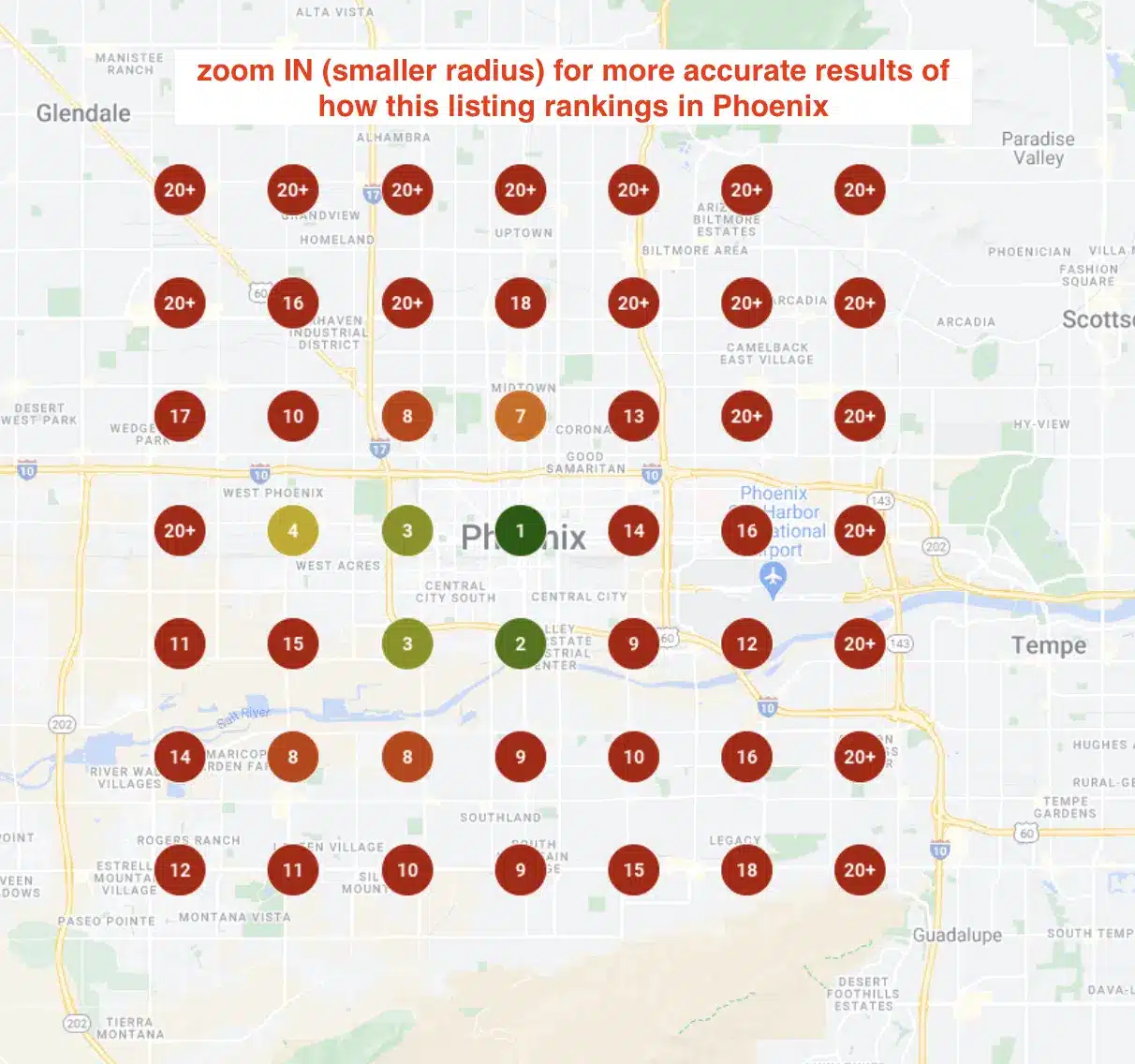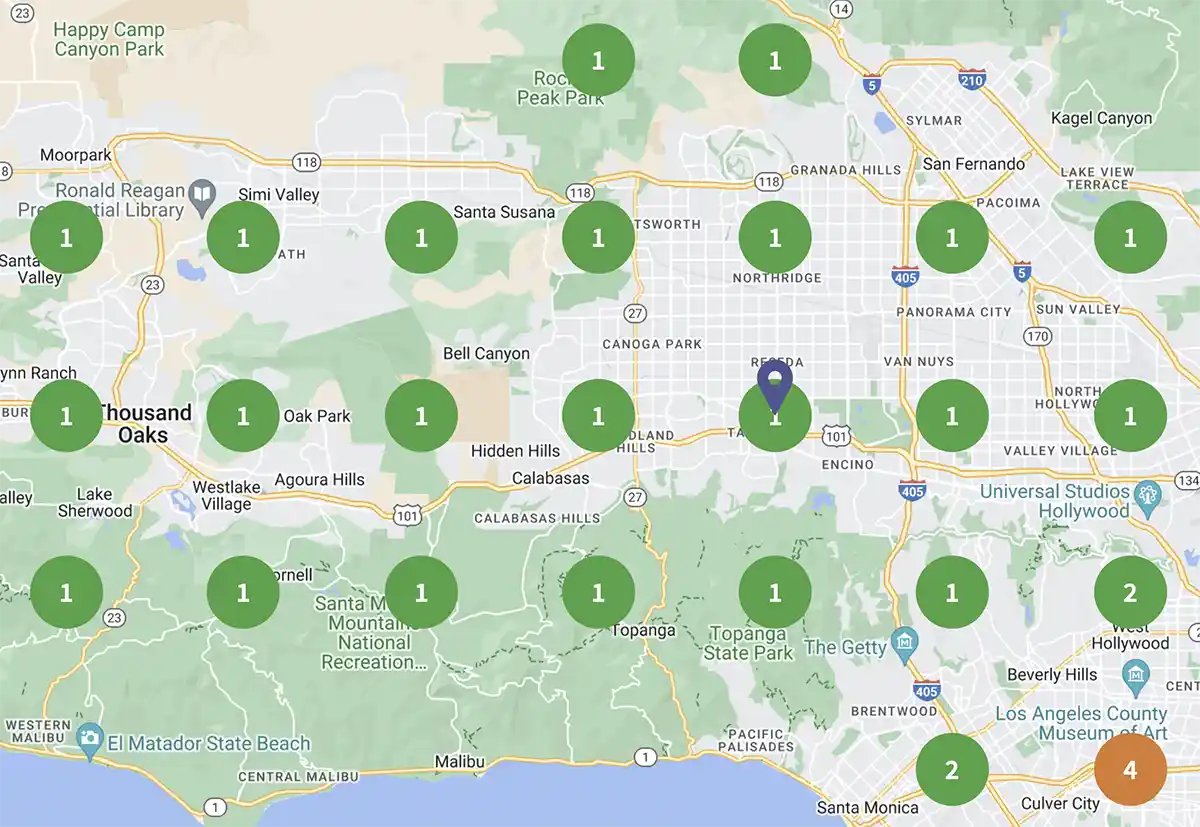Unleashing Geotargeting’s Potential: Elevate Local Business Conversions by Refining Targeting Strategies
Local businesses must adapt to sophisticated marketing strategies to stay competitive in an increasingly digital world. Imagine reaching potential customers at the right place and time, delivering tailored messages that speak directly to their needs, and driving them to take immediate action.
This powerful capability is known as geotargeting—a precise marketing technique that uses location data to engage your audience more effectively than ever before.
If you’re a marketing manager eager to enhance your local campaigns and see tangible results, mastering geotargeting could be the game-changer you’ve been seeking.
Why Geotargeting is a Must-Have Strategy

Gone are the days of casting a wide net and hoping to catch a few fish. This happens with mass direct mail, email blasts, and other non-connected marketing channels.
Geotargeting allows you to define specific geographic areas where your ads are shown, ensuring your marketing efforts are highly focused and relevant.
You can identify and engage potential customers close to your business by utilizing GPS, WiFi, and cellular data, driving higher foot traffic and conversion rates. This hyperlocal approach maximizes your marketing investments and ensures you reach the right people at the right time.
Personalized Engagement at Scale
The true power of geotargeting lies in its ability to provide personalized experiences at scale.
Whether you’re promoting a special event, a limited-time offer, or a new product line, geotargeting allows you to customize your messaging based on each location’s specific characteristics.
This level of personalization fosters stronger connections with your audience, encouraging higher engagement and boosting brand loyalty. It’s not just about attracting customers; it’s about creating meaningful interactions that resonate and drive them to act.
Are you ready to harness geotargeting’s full potential to supercharge your local marketing efforts?
In the following sections, we’ll delve into the essentials of setting up effective geotargeting campaigns, explore advanced techniques to refine your strategies and provide actionable insights to measure and optimize your results.
Get ready to elevate your marketing playbook and see your local business thrive. Discover how precision targeting can transform your approach and drive remarkable growth for your local business.
Mastering Geotargeting: Boost Your Local Business Conversion Rates with Precision Targeting

Local businesses must adapt to sophisticated marketing strategies to stay competitive in an increasingly digital world.
Imagine reaching potential customers at the right place and time, delivering tailored messages that speak directly to their needs, and driving them to take immediate action.
This powerful capability is known as geotargeting—a precise marketing technique that uses location data to engage your audience more effectively than ever before.
If you’re a marketing manager eager to enhance your local campaigns and see tangible results, mastering geotargeting could be the game-changer you’ve been seeking.
Marketing Channels Utilized:
- Radio
- Traditional Television (linear TV)
- Connected Television
- Over-the-Top (OTT) Streaming
- Direct Mail
- Display ads
- Search ads
- Social media ads
- Targeted Email Marketing
- Engaging Content Marketing
The output text becomes clearer and more visually appealing by reorganizing the text into a bulleted list and using descriptive phrases.
Challenges of Geotargeting for CMOs
1. Navigating Data Privacy and Compliance
One of the most pressing challenges for Chief Marketing Officers (CMOs) when implementing geotargeting strategies is ensuring adherence to data privacy regulations.
As the examination of personal data collection, storage, and utilization intensifies, geotargeting—which relies on location information—demands a solid structure to navigate user consent and preserve privacy.
Regulations such as the General Data Protection Regulation (GDPR) in Europe and the California Consumer Privacy Act (CCPA) in the United States impose strict guidelines that businesses must follow to avoid hefty fines and reputational damage.
Impact on CMO: CMOs must collaborate closely with legal and compliance teams to develop transparent data collection practices and clear privacy policies.
This includes obtaining explicit user consent, offering opt-in/opt-out mechanisms, and ensuring data is securely stored and managed. The challenge is to comply with these regulations and communicate these practices effectively to consumers to build trust and maintain brand integrity.
Balancing effective geotargeting strategies with stringent data privacy requirements is crucial for long-term success.
2. Integrating Technology and Managing Complexity

Implementing a successful geotargeting campaign involves navigating a web of technological complexities. Integrating geotargeting capabilities with existing marketing platforms and ensuring compatibility with various devices and data sources can be daunting.
The technology behind geotargeting—such as GPS, WiFi triangulation, and cellular data—must be accurately calibrated to ensure precise targeting and seamless user experiences.
Impact on CMO: CMOs must allocate resources to build a technically proficient team or partner with specialized vendors to manage these integrations.
This includes ensuring the technology can handle real-time data processing, accurately define geofences, and deliver targeted content without lag.
Additionally, ongoing maintenance and optimization are required to address signal interference, location accuracy, and platform compatibility issues. Overcoming these technical hurdles is essential for effectively implementing and scaling geotargeting campaigns.
3. Measuring Effectiveness and Demonstrating ROI
Another significant challenge is accurately measuring the effectiveness of geotargeting campaigns and demonstrating return on investment (ROI).
Different from traditional marketing methods, the success of geotargeting can be more difficult to quantify due to the multitude of variables involved, such as varying consumer behaviors, external environmental factors, and the precision of location data.
Impact on CMO: CMOs need to develop sophisticated analytics frameworks to track and measure the impact of geotargeting efforts.
This involves integrating various data sources, employing advanced attribution models, and continuously monitoring key performance indicators (KPIs) such as foot traffic, engagement, and conversion rates.
The challenge lies in attributing these metrics directly to geotargeting efforts amidst a complex digital landscape.
With clear, data-driven insights, justifying the investment in geotargeting to stakeholders and securing ongoing support can be easy.
While geotargeting presents significant opportunities to enhance local business marketing efforts through precision targeting, it also brings challenges that CMOs must address.
Navigating data privacy and compliance, managing technological complexities, and measuring campaign effectiveness are critical hurdles requiring strategic planning and resource allocation.
By addressing these challenges head-on, CMOs can harness geotargeting’s full potential, driving meaningful engagement and conversion rates for their local businesses.
Embrace the power of geotargeting and navigate these challenges to elevate your marketing strategy and achieve remarkable business outcomes.
Step-by-Step Guide for CMOs: Implementing Mastering Geotargeting: Boost Your Local Business Conversion Rates with Precision Targeting
Geotargeting represents a cutting-edge approach to local marketing, enabling businesses to deliver highly relevant messages to customers based on their precise location.
As a Chief Marketing Officer (CMO), your strategic oversight is essential to successfully implementing this powerful technique. This step-by-step guide will help you navigate the complexities of geotargeting to enhance your local business conversion rates.
Step 1: Understand Geotargeting Fundamentals
Objective: Build a solid foundation of knowledge about geotargeting and its applications.
Define Geotargeting: Recognize that geotargeting involves using location data to deliver tailored marketing messages to consumers within specific geographic areas.
Explore Technologies: Learn about the various technologies that enable geotargeting, including GPS, WiFi triangulation, and cellular data.
Step 2: Establish Clear Objectives and Goals
Objective: Identify what you aim to achieve with your geotargeting campaigns.
- Set Specific Goals: Determine your primary objectives, such as increasing foot traffic, boosting sales during certain hours, or promoting special events.
- Identify KPIs: Establish key performance indicators (KPIs) such as conversion rates, engagement rates, and ROI to measure the success of your campaigns.
Tip: Ensure your geotargeting goals align with your broader marketing and business objectives.
Step 3: Conduct Market Research and Audience Segmentation
Objective: Identify the geographic areas and audience segments you want to target.
- Market Analysis: Conduct thorough market research to pinpoint high-potential locations. Consider factors like foot traffic patterns, proximity to your business, and competitor presence.
- Audience Profiling: Segment your audience based on demographics, behaviors, and preferences to create highly targeted campaigns.
Tool: Utilize data analytics tools and customer insights to refine your target zones and audience segments.
Step 4: Select the Right Geotargeting Platform
Objective: Choose a geotargeting platform that meets your business and technical requirements.
- Evaluate Platforms: Compare geotargeting platforms based on their features, ease of use, integration capabilities, and cost.
- Vendor Collaboration: Engage with vendors to understand their offerings and support services.
Recommendation: Opt for platforms offering real-time analytics, comprehensive reporting features, and seamless integration with your existing marketing tools.
Step 5: Develop Compelling Campaign Content
Objective: Create engaging and relevant marketing messages for your geotargeting campaigns.
- Personalize Messages: Craft personalized messages tailored to your target audience’s specific needs and preferences in each geographic area.
Engaging Visuals: Use eye-catching visuals and clear calls to action (CTAs) to capture attention and drive immediate action.
Tip: A/B tests different messages and offers to identify what resonates best with your audience.
Step 6: Implement and Launch Your Campaigns
Objective: Set up and launch your geotargeting campaigns effectively.
- Technical Setup: Collaborate with your IT and marketing teams to configure geotargeting boundaries, triggers, and notifications.
- PreLaunch Testing: Conduct thorough testing to ensure accurate detection and proper triggering of your messages.
Checklist: Create a prelaunch checklist to confirm that all technical aspects function correctly and that all team members are aligned on campaign objectives and execution plans.
Step 7: Monitor and Optimize Campaign Performance
Mastering geotargeting is a transformative approach that elevates local business marketing efforts.
As a Chief Marketing Officer (CMO), your role is pivotal in orchestrating this strategy to ensure your business survives and thrives in an increasingly competitive market.
Geotargeting allows you to deliver highly personalized, location-specific messages that resonate with your audience, driving higher engagement and conversion rates.
However, implementing geotargeting has its challenges. Navigating the intricate landscape of data privacy and compliance is crucial to maintaining consumer trust and avoiding legal repercussions.

Stop Wasting Ads! Get Laser-Targeted Clicks (and Customers)
Tired of ad duds? Get eyeballs on your brand with laser-focused online ads that convert. Click to unleash the power of targeted marketing!

Stop Scrolling, Start Selling: Social Ads That Convert Like Crazy
Get ready to unleash the power of AI-targeted ads that turn likes into leads and leads into SALES.
Summary
The technical complexities involved in integrating geotargeting technologies with your existing marketing platforms require a well-coordinated effort and allocation of resources. Additionally, accurately measuring the effectiveness of your geotargeting campaigns and demonstrating return on investment (ROI) demands sophisticated analytics and continuous optimization.
Despite these challenges, the rewards of successfully implementing geotargeting are substantial.
By leveraging precise targeting, you can significantly enhance your marketing efficiency, ensuring that your messages reach the right people at the right time.
This boosts foot traffic and sales and fosters stronger connections with your local audience, enhancing brand loyalty and long-term customer relationships.
In conclusion, geotargeting represents a powerful tool in the CMO’s arsenal, capable of transforming local marketing strategies and delivering exceptional results.
By addressing the challenges head-on and following a structured approach, you can harness geotargeting’s full potential to drive meaningful business outcomes.
The future of local marketing lies in precision targeting, and as a CMO, you can lead your business to unprecedented success. Embrace the power of geotargeting and watch your local business conversion rates soar.

